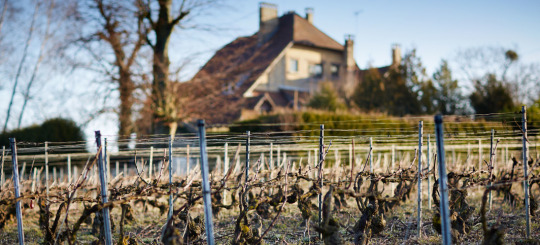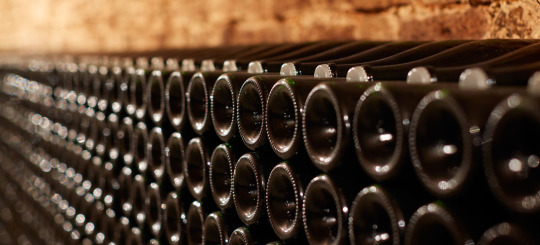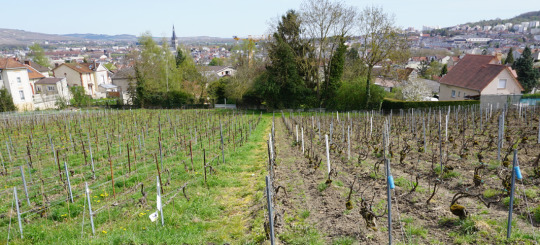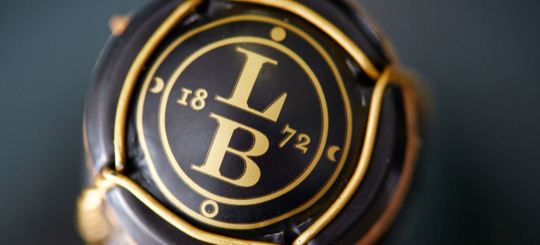When we think about wine and how it reflects the climate and the soil of the region, the grape varieties and the winemaking techniques, nowhere else this synergy is so fascinating as in Champagne. Soil, climate and the qualities of the grapes have played an important role in here. The vineyards are divided among four production areas, each one bringing together a unique combination of climate, soil and topography: Vallée de la Marne, Montagne de Reims, Côte des Blancs and Côte de Sézanne, Aube. Pinot Noir, Pinot Meunier and Chardonnay are the main grape varieties of Champagne.

The climate is oceanic and continental and the oceanic influence brings steady rainfall without significant variations in seasonal temperatures. The continental influence ensures ideal levels of sunlight in summer, but also frosts in winter. The average annual temperature is around 10 degrees. The soils are geologically homogenous with different combinations of chalk, marl, limestone, clay and silica sand which express different terroirs. The upper layer is generally formed of clay and sand and the deeper layers, the subsoils, are rich in chalk which is very important in the soil for thermal and humidity control. This type of subsoil provides good drainage and also imparts the mineral flavour in the wines.
Champagne as a region has a long history in winemaking, but only at the end of the 18th century with the technical innovations that allowed for the measuring of residual sugars in wine and the studies conducted by Maumené and Paster about the use of yeast, the wine started to develop into the wine we know and love today. In less than a hundred years Champagne became so popular that the production increased from a few hundred of thousands of bottles to almost 30 million bottles by the end of the 19th century. In 2000 the production exceeded 300 million bottles.

Unfortunately, this kind of explosive growth of demand and the cost of the land in Champagne led to activities which have damaged big parts of this unique area. The need for higher yields, to be able to produce more wine, meant also an increasing need for compost to fertilise the plants. From the beginning of the 20th century winegrowers from Champagne started to get their fertilisers from the city of Paris, in exchange for paying the transport cost they would get all the compost they wanted from the city in the form of trash. In the beginning the waste was mostly organic matter, but as time passed things started to change. The most drastic changed happened after the petrochemical revolution and the introduction of plastic materials to everyday life.
The governing body of Champagne finally outlawed the practice of using trash as compost at the end of the 90’s. However, decades of damage had already been done to the vineyards, now covered in layers of trash, including BHPA plastics. Not to mention all the damage caused by the herbicides and pesticides that have been used over the years.

Left the biodynamically farmed vineyard of Leclerc Briant. Right a conventional winery. The village of Epernay can be seen in the background.
These days a big part of the soil in Champagne is far from healthy, lacking the living soils surrounded by biodiversity. Maybe one of the main reasons why all of this happened is the fact that there are approximately 19.000 winegrowers in Champagne but only around 4.500 producers. To make high quality wines, producers normally lower the yields per plants. Most of the artisan wineries have in average a yield of 4000 kilograms per hectare for example, while in Champagne the yield is 10,000 kilograms per hectare. Most winegrowers in Champagne sell their grapes to cooperatives and just want to get the highest price possible for the grapes they sell. Because of the winemaking technique used, the champenoise method, you can even make good Champagne out of bad grapes, but when you taste a Champagne made with good, healthy grapes you can clearly tell the difference.
There are two letter initials marked on the label of a Champagne bottle that help consumers to figure out how the wine was made. The one we find most important are the RM initials, which indicate that a single winery has been responsible for the whole production process of the wine, from growing their own grapes to the winemaking in their own cellar. A full list of initials can be found HERE.

Leclerc Briant, a responsible Champagne producer
Despite the fact that most of the soil in Champagne is dead, the new generation of winemakers is starting to make a change, like they have been doing in Burgundy for the past years. It will take time, decades even, before the soil will recover, but as consumers we can contribute to this by supporting wineries which have adopted organic or biodynamic wine production. For us it’s a very important matter and therefore we are also very selective on which wineries we represent. We’ve recently started to collaborate with the Champagne house of Leclerc Briant, for they have been conducting biodynamic agriculture since the 1940’s and they make excellent wines. Champagne is a unique region, we can only hope that the new generation will be more conscious about the environment and will revitalise and preserve the land for generations to come.

